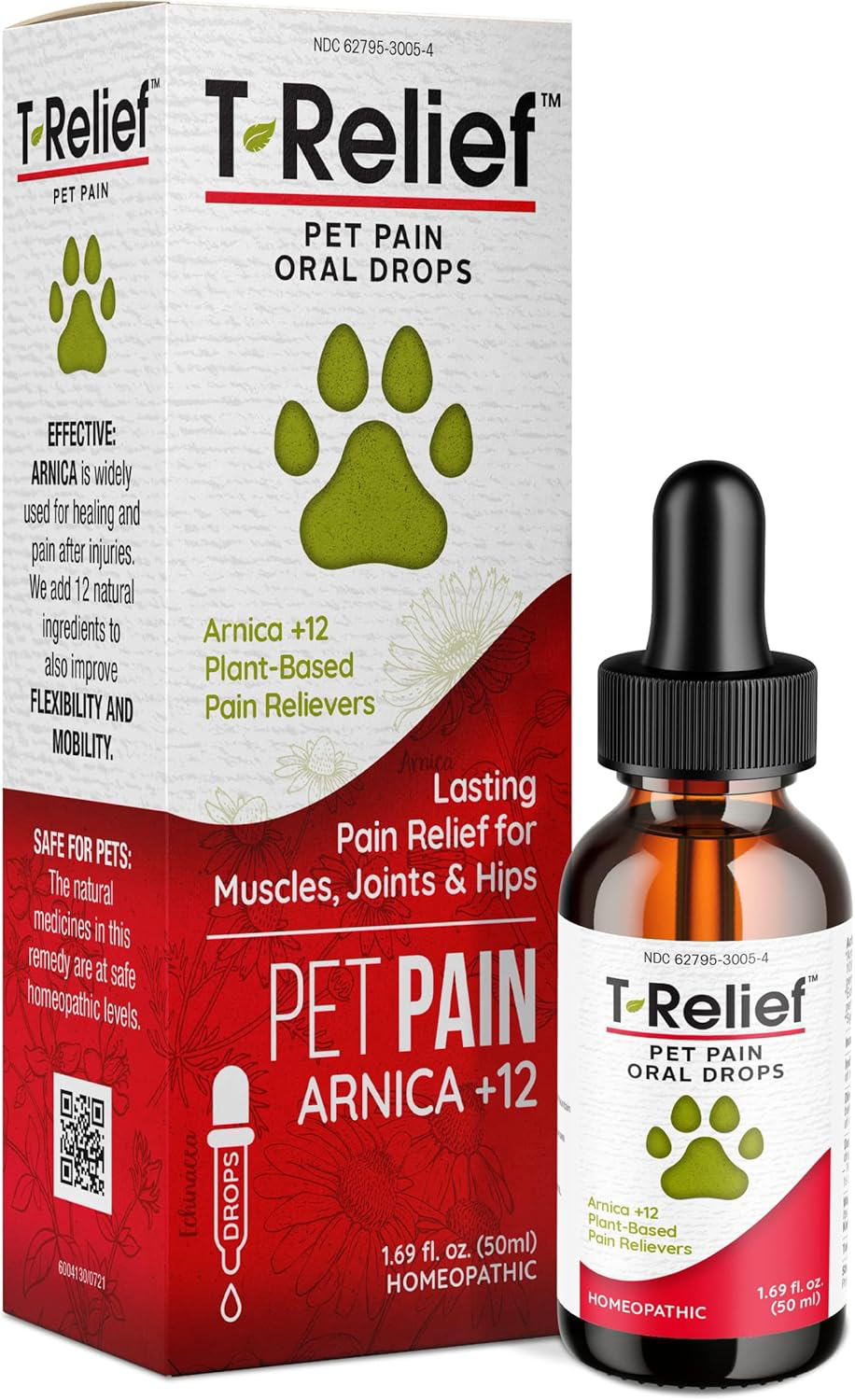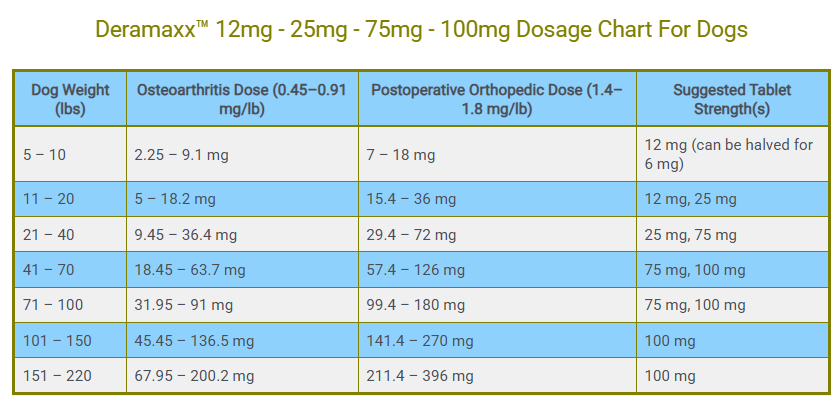Deramaxx is a prescription medication commonly used to manage pain and inflammation in dogs. Its active ingredient, deracoxib, belongs to a class of drugs known as non-steroidal anti-inflammatory drugs (NSAIDs). These drugs work by blocking enzymes that trigger inflammation, pain, and fever—specifically COX-2 enzymes. Unlike older NSAIDs that affect both COX-1 and COX-2 enzymes, Deramaxx is more selective, which helps reduce gastrointestinal side effects in many dogs.
Deramaxx is often prescribed for dogs suffering from osteoarthritis, post-surgical pain, or other chronic inflammatory conditions. Available in chewable tablet form, it’s convenient for pet owners to administer, and dogs usually tolerate the flavor well. However, just because it’s easier to give doesn’t mean it should be handed out without professional supervision.
Veterinarians typically recommend this drug for short- or long-term pain relief depending on the condition. It’s important to follow the prescribed dosage and duration because while effective, misuse can lead to serious side effects like gastrointestinal ulcers or kidney damage.

Deramaxx Dosage For Dogs
The recommended Deramaxx dosage for dogs with osteoarthritis pain and inflammation is 0.45 to 0.91 mg per pound (1 to 2 mg per kg) of body weight, given once daily as needed. For dogs requiring less than 12.5 mg, use the 12 mg tablet, which can be split in half to provide a 6 mg dose.
Do not attempt to dose smaller dogs by breaking larger tablets, as this may lead to inaccurate dosing. Always consult your veterinarian for the correct dosage and administration for your dog’s specific needs.
Moreover, not every dog is a candidate for Deramaxx. Pre-existing conditions, age, and other medications can affect whether this drug is safe for your pet. That’s why it’s crucial to consult your vet before beginning any treatment.
Deramaxx Dosage Chart For Dogs By Weight
| Condition | Dosage (mg/lb/day) | Dosage (mg/kg/day) | Frequency & Duration |
|---|---|---|---|
| Osteoarthritis Pain and Inflammation | 0.45 – 0.91 mg/lb/day | 1 – 2 mg/kg/day | Once daily, as needed, long-term use possible |
| Postoperative Orthopedic Pain and Inflammation | 1.4 – 1.8 mg/lb/day | 3 – 4 mg/kg/day | Once daily, as needed, not to exceed 7 days |
| Postoperative Dental Pain and Inflammation | 0.45 – 0.91 mg/lb/day | 1 – 2 mg/kg/day | Once daily, for 3 days; first dose ~1 hour before surgery |
Best Value
Pawfy Advanced Pain Management – Essential Vitamins & Supplements with Omega 3 for Dogs

T-Relief Pet Pain Relief Drops Powerful Natural Medicines

Deramaxx™ 12mg – 25mg – 75mg – 100mg Dosage Chart For Dogs
| Dog Weight (lbs) | Osteoarthritis Dose (0.45–0.91 mg/lb) | Postoperative Orthopedic Dose (1.4–1.8 mg/lb) | Suggested Tablet Strength(s) |
|---|---|---|---|
| 5 – 10 | 2.25 – 9.1 mg | 7 – 18 mg | 12 mg (can be halved for 6 mg) |
| 11 – 20 | 5 – 18.2 mg | 15.4 – 36 mg | 12 mg, 25 mg |
| 21 – 40 | 9.45 – 36.4 mg | 29.4 – 72 mg | 25 mg, 75 mg |
| 41 – 70 | 18.45 – 63.7 mg | 57.4 – 126 mg | 75 mg, 100 mg |
| 71 – 100 | 31.95 – 91 mg | 99.4 – 180 mg | 75 mg, 100 mg |
| 101 – 150 | 45.45 – 136.5 mg | 141.4 – 270 mg | 100 mg |
| 151 – 220 | 67.95 – 200.2 mg | 211.4 – 396 mg | 100 mg |
How Deramaxx Works in Dogs
The science behind Deramaxx is both fascinating and functional. It works by inhibiting cyclooxygenase-2 (COX-2) enzymes that are primarily responsible for causing pain and inflammation. By targeting only COX-2 and not COX-1, Deramaxx reduces inflammation without compromising the protective functions of COX-1 enzymes in the stomach lining and kidneys.
After ingestion, Deramaxx gets absorbed into the bloodstream and heads straight to the site of inflammation. Whether your furry friend is limping from arthritis or recovering from surgery, Deramaxx starts working within hours to bring relief. Its effects can last up to 24 hours, making once-a-day dosing possible for many pets.
If your canine has been prescribed Deramaxx, it’s also essential to watch for signs that the medication is working: reduced limping, improved mobility, and a general return to a happy demeanor.
These are good indicators that the drug is doing its job. If you don’t see these improvements, or if new symptoms appear, it’s time for a follow-up with your vet.

Frequency and Duration of Deramaxx® Treatment
When it comes to giving Deramaxx to your dog, the “how often” and “for how long” are just as important as the dosage itself. Deramaxx is typically prescribed as a once-daily medication, which makes it convenient for pet owners.
But while it’s easy to remember, it’s essential not to get too comfortable or complacent with long-term NSAID use without veterinary supervision.
How often should Deramaxx be given to Canines?
Usually, it’s administered once every 24 hours. However, in some acute cases—like after surgery—your vet might suggest a short-term course lasting only 3 to 7 days. For chronic conditions like canine osteoarthritis, treatment could continue for months or even years, with periodic veterinary monitoring.
Duration of use varies by condition:
- Post-operative pain: 3–7 days typically
- Arthritis or chronic inflammation: Ongoing, with regular bloodwork
- Acute injuries or inflammation: 1–2 weeks, based on response
You should never extend or reduce the duration on your own. Even if your dog seems better, stopping too soon can cause a relapse. On the flip side, continuing too long without supervision could result in long-term liver complications or kidney damage.
Signs it’s time to adjust the treatment:
- Increased lethargy
- Gastrointestinal upset (vomiting/diarrhea)
- Loss of appetite
- Excessive thirst/urination
- Behavior changes
In some cases, Deramaxx can be used on an as-needed basis. For instance, older dogs with arthritis may only require it during weather-related flare-ups or after intense activity. Talk to your vet about individualized pain management if your dog’s condition fluctuates.
Bottom line: While Deramaxx is incredibly effective fo

Common Uses of Deramaxx in Veterinary Medicine
Deramaxx plays a critical role in treating:
- Osteoarthritis
- Post-operative pain
- Soft tissue injuries
- Dental procedures
Vets also use Deramaxx as part of long-term pain management protocols. Because of its anti-inflammatory properties, Deramaxx can improve your dog’s quality of life by increasing mobility, energy levels, and appetite.
However, not every dog benefits the same way. Some dogs may respond better to other NSAIDs or require additional pain management therapies like physical therapy or supplements
How to Administer Deramaxx Correctly
Deramaxx is designed to be easy to administer, but that doesn’t mean you can just toss it to your pup and forget about it. Here’s the best way to ensure your dog gets its full benefit:
- Give with food: While Deramaxx can be given on an empty stomach, administering it with food can help reduce the risk of stomach upset.
- Same time daily: Create a routine. Giving it at the same time each day helps maintain consistent blood levels of the medication.
- Don’t crush or split tablets: Doing so can affect how the medication is absorbed. Only break the tablet if your vet advises.
- Watch for chewing issues: If your dog doesn’t like the chewable form, you may need a different delivery method like a pill pocket or a flavored gel.
If your dog vomits or spits out the pill, do not give another dose until you’ve talked to your vet. Too much Deramaxx can be dangerous—even fatal.
Deramaxx is most effective when it’s part of a bigger treatment plan, so don’t skip follow-up vet visits or any recommended supplements or therapies.
You May Also Like To Read:
Factors That Influence Deramaxx Dosage
Age and Breed Considerations
Not all dogs are created equal—especially when it comes to medication. A Chihuahua and a Great Dane might both suffer from arthritis, but their Deramaxx needs will be worlds apart. That’s why factors like age and breed play a significant role in determining the correct dosage and safety of Deramaxx.
Puppies should not take Deramaxx unless explicitly prescribed by a vet. Their organs are still developing, making them more vulnerable to side effects. Similarly, senior dogs require close monitoring because they may already have diminished liver or kidney function—two key organs involved in drug metabolism.
Breed sensitivity is another factor. Some breeds, particularly smaller ones like Dachshunds or Yorkies, are more prone to gastrointestinal issues, which are a known risk with NSAIDs like Deramaxx. On the other hand, large breeds like German Shepherds and Labradors are often the ones needing long-term joint pain relief, so they’re more likely to be on extended courses of Deramaxx—but they’re also at higher risk for developing tolerance or side effects over time.
Genetic predispositions can also complicate things:
- Breeds like Scottish Terriers may have liver sensitivities.
- Collies and Australian Shepherds might carry the MDR1 gene, affecting how they metabolize various medications.
For these reasons, your vet may start your dog on the lowest possible dose and adjust based on how they respond. They may also run blood work before prescribing Deramaxx to get a baseline for organ function.
In summary, always provide your vet with your dog’s full health and breed history before starting Deramaxx. Customizing treatment isn’t just smart—it’s essential for keeping your pup safe and comfortable.
Health Conditions That Affect Dosage
If your puppy has underlying health problems, those conditions will absolutely affect how Deramaxx is prescribed—or if it’s prescribed at all. Deramaxx can strain certain organs and systems, especially when they’re already compromised.
Here are some key health issues that can influence dosage:
- Kidney Disease: Deramaxx is filtered through the kidneys. Giving it to a dog with impaired kidney function without adjustments can accelerate renal failure.
- Liver Disease: Dogs with liver issues may not process the drug properly, leading to toxic build-up.
- Stomach Ulcers or GI Sensitivity: Because Deramaxx is an NSAID, it can irritate the gastrointestinal tract, leading to ulcers or internal bleeding—especially in dogs with a history of digestive issues.
- Heart Conditions: Dogs with congestive heart failure or other cardiovascular issues should use NSAIDs like Deramaxx with caution, as it may cause fluid retention or exacerbate symptoms.
Vets may require regular blood tests to monitor your dog’s liver enzymes and kidney values during Deramaxx therapy. They might also suggest dose tapering—starting at a normal dose and gradually reducing it to the lowest effective amount.
In some cases, Deramaxx might not be suitable at all. Your vet might recommend alternatives like:
- Gabapentin
- Carprofen (with better tolerance)
- CBD oil or joint supplements (for milder cases)
So, if your dog has any chronic health conditions, expect a more conservative dosing approach, frequent checkups, or even a complete reevaluation of their pain management plan. The goal is always the same: relief without risk.
Drug Interactions to Watch Out For
Mixing medications can be a recipe for disaster—especially when it involves NSAIDs like Deramaxx. If your dog is on any other meds, you need to be aware of potential interactions that could either reduce Deramaxx’s effectiveness or amplify its side effects.
Here are some medications and supplements that should not be used in combination with Deramaxx:
- Other NSAIDs (Carprofen, Rimadyl, Meloxicam): Combining two NSAIDs significantly raises the risk of ulcers and kidney issues.
- Steroids (Prednisone, Dexamethasone): Taking steroids and Deramaxx together can lead to severe gastrointestinal bleeding.
- Diuretics and ACE inhibitors: These can interfere with kidney function when used alongside Deramaxx.
- Anticoagulants (blood thinners): NSAIDs already have a blood-thinning effect; adding another blood thinner increases bleeding risks.
- Herbal supplements like turmeric or willow bark: Though natural, these also have anti-inflammatory properties and can interact badly with NSAIDs.
Always provide your vet with a full list of everything your dog is taking—even supplements and flea preventatives. Timing also matters. If your dog needs to switch from one NSAID to another, there should be a “washout period” of several days in between to prevent complications.
Your vet will use this information to fine-tune the safest possible dosing schedule for your dog. Skipping this step could turn a helpful drug into a harmful one.
Deramaxx For Dogs Side Effects and Risks
While dog Deramaxx is widely used and generally well-tolerated, it’s not without side effects. Like all NSAIDs, Deramaxx can cause a range of adverse reactions—some mild, others more serious. As a pet parent, being aware of these risks can help you act quickly if something seems off.
Here are some common side effects associated with Deramaxx:
- Loss of appetite
- Vomiting or diarrhea
- Lethargy or unusual tiredness
- Mild stomach upset
- Increased thirst or urination
These symptoms may show up within the first few days of starting the medication. Sometimes, they disappear on their own as your pup’s body adjusts. Other times, they indicate the dosage may be too high or that your dog’s system just doesn’t tolerate the medication well.
Dogs, especially those with sensitive digestive systems, might experience gastrointestinal upset more often. Feeding Deramaxx with a full meal can sometimes reduce this irritation.
Keep a close eye on your dog when starting Deramaxx. Look for any changes in behavior or routine—especially if they become withdrawn, seem disoriented, or suddenly refuse food. These are subtle hints that something might be wrong.
Pro tip: Keep a medication diary for your dog. Track each dose and note any physical or behavioral changes. This can be incredibly helpful during vet checkups.
Serious Reactions and Toxicity Signs
Though rare, serious side effects do happen—and they can be life-threatening if not caught early. Deramaxx, like other NSAIDs, can impact the gastrointestinal tract, liver, and kidneys, especially with long-term use or incorrect dosing.
Red flags you should never ignore:
- Bloody vomit or diarrhea (may look like coffee grounds)
- Yellowing of the eyes or gums (jaundice)
- Sudden changes in urination or complete loss of bladder control
- Seizures or severe lethargy
- Collapsing or fainting
These symptoms may signal internal bleeding, liver toxicity, or kidney failure. If your dog exhibits any of these signs, stop the medication immediately and contact your veterinarian or an emergency animal clinic.
Also, beware of overdose. Dogs are notorious for sniffing out chewable meds that smell like treats. If your dog gets into the medication bottle, it’s a medical emergency. Symptoms of overdose include:
- Extreme vomiting
- Black, tar-like stools
- Seizures
- Coma
To prevent accidents, store Deramaxx high up and out of reach. Use child-proof containers and never leave pills in accessible bags or drawers.
Regular blood work can help detect these problems before they become critical. Always follow your vet’s schedule for testing, especially if your dog is on long-term Deramaxx.
What to Do If Your Dog Has a Bad Reaction
Even with all precautions, your dog might still react badly to Deramaxx. So what should you do if that happens?
Step 1: Stop the medication immediately. Don’t give another dose until you speak with your veterinarian.
Step 2: Call your vet. Provide them with:
- Your dog’s weight
- Dosage given
- Time of last dose
- Symptoms observed
If it’s after hours, call an emergency vet clinic or poison control for pets like the ASPCA Animal Poison Control Center.
Step 3: Provide supportive care. Until your dog gets medical help:
- Keep them hydrated
- Withhold food if vomiting is present
- Create a calm, comfortable space for resting
Your vet may suggest bringing your dog in for:
- IV fluids to flush out the kidneys
- Activated charcoal if the ingestion was recent
- Blood tests to assess liver and kidney function
Never attempt to treat the symptoms yourself with human meds or home remedies. Many over-the-counter solutions can worsen the situation.
Lastly, your vet may suggest switching to a different pain medication or combining a lower Deramaxx dose with natural supplements to reduce side effects.
Your dog’s health isn’t something to gamble with—always act fast if you suspect something is wrong.
Natural Alternatives and Supplements
If you’re concerned about the long-term effects of Deramaxx or just want to explore gentler options, you’re not alone. Many pet owners look into natural alternatives and supplements to support their dog’s joint health.
Here are some popular non-pharmaceutical options that may complement or replace Deramaxx:
- Glucosamine and Chondroitin: Help rebuild cartilage and reduce inflammation.
- Omega-3 Fatty Acids (Fish Oil): Natural anti-inflammatory that supports joint health.
- Turmeric (Curcumin): Anti-inflammatory herb, but needs vet approval due to potential NSAID interactions.
- CBD Oil: Promising results in pain relief, but make sure it’s pet-formulated and vet-approved.
- Physical therapy: Improves strength, mobility, and flexibility.
- Weight management and diet: Extra weight stresses joints; a lean dog is a happy dog.
Before you ditch Deramaxx entirely, consult your vet. Often, a combo approach works best: lower Deramaxx dosage + high-quality supplements. This way, your dog gets effective pain relief with fewer risks.
Storing Deramaxx Safely
When it comes to any medication—especially one as potent as Deramaxx—proper storage isn’t optional. It’s a vital part of keeping your dog safe and ensuring the medicine remains effective.
Here’s how to store Deramaxx correctly:
- Keep in a cool, dry place: Avoid heat, humidity, and direct sunlight. The bathroom medicine cabinet isn’t the best choice—opt for a kitchen cupboard or drawer instead.
- Avoid extreme temperatures: Never store Deramaxx in your car or near a heater. High heat can alter the chemical composition, making it unsafe.
- Original packaging only: Always keep Deramaxx in its original bottle or blister pack. It’s specially designed to protect the drug from moisture and contamination.
- Use childproof containers: Even if you don’t have kids, child-resistant caps can prevent curious paws or noses from accessing the pills.
- Label clearly: If you have multiple pets, label the bottle with your dog’s name to avoid mix-ups.
What if the pills get wet or damaged?
Toss them. Moisture can degrade the medication, and a compromised pill may not deliver the correct dose—or worse, may be harmful.
Dispose of expired or unused Deramaxx properly. Don’t flush it down the toilet or throw it in the trash. Instead, take it to a veterinary clinic or a local medication disposal program. Some pharmacies also accept pet meds for safe disposal.
Proper storage doesn’t just protect your pet—it protects your household, too. Make it a habit, and you’ll avoid a lot of unnecessary risks.
Avoiding Overdose
Overdosing is one of the most dangerous mistakes pet owners can make with Deramaxx. This medication is effective in small amounts, but even a little too much can cause serious, sometimes irreversible damage to your dog’s organs.
Symptoms of overdose include:
- Vomiting (possibly with blood)
- Black, tarry stools
- Excessive drooling
- Seizures
- Collapse or coma
How to prevent overdose:
- Use a pill organizer or chart: Track each dose, especially if multiple people are involved in your pet’s care.
- Never guess the dosage: If you forget the correct dose, don’t estimate—call your vet.
- Avoid double-dosing: If you’re unsure whether your dog got their pill, it’s safer to skip one dose and confirm with your vet than to risk giving an extra.
- Secure the medication: Keep it out of reach from pets and children at all times.
What to do if an overdose happens?
Seek emergency veterinary care immediately. If your regular vet is closed, contact an emergency animal hospital or poison control. Early intervention can save your dog’s life.
Always remember: more is not better when it comes to Deramaxx.
Talking to Your Vet Before Starting
Before you ever give your dog their first Deramaxx tablet, you need to have a thorough conversation with your vet. This isn’t just about dosage—it’s about setting up your dog for success and avoiding complications.
Here are key questions to ask:
- What’s the starting dose for my dog’s condition and weight?
- How long should my dog be on Deramaxx?
- What are the signs of side effects I should watch for?
- How often should we do blood work to monitor organ function?
- Are there any interactions with other medications or supplements my dog is taking?
Be honest about any other treatments your dog is using. Even natural supplements can cause harmful interactions.
Don’t forget to share:
- Any history of kidney, liver, or stomach issues
- Recent changes in weight or behavior
- Past reactions to medications
Once your dog is on Deramaxx, keep the communication going. Update your vet on any improvements or concerns during follow-up visits.
Pro tip: Bring a journal or notes with questions to each vet appointment. When your pet’s health is on the line, it’s better to ask too many questions than too few.
Final Thoughts
Dog Deramaxx can be a game-changer in your dog’s life. Whether it’s easing the stiff joints of a senior pup or managing post-surgery pain, this medication offers real, measurable relief. But it’s not something to be taken lightly. The key to success with Deramaxx is responsible use—giving the right dose, staying alert to side effects, and working closely with your vet.
From dosage guidelines and storage tips to recognizing adverse reactions and exploring alternative treatments, this guide has covered everything you need to know. If you treat Deramaxx with the respect it deserves, it can help your dog live a more comfortable, mobile, and joyful life.
Always remember: your dog can’t tell you when something’s wrong. That’s why it’s your job to be informed, observant, and proactive every step of the way.
FAQs
Can I give Deramaxx with food?
Yes, in fact, giving Deramaxx with food is recommended. It can help reduce the risk of gastrointestinal side effects like nausea, vomiting, or diarrhea. Just make sure the food is something your dog tolerates well.
What if I miss a dose?
If you miss a dose, give it as soon as you remember. But if it’s almost time for the next scheduled dose, skip the missed one and continue with the regular schedule. Never double up to make up for a missed dose—it could lead to an overdose.
Is Deramaxx safe for puppies?
Generally, Deramaxx is not recommended for puppies under 4 months old unless explicitly prescribed by a veterinarian. Puppies’ organs are still developing, making them more vulnerable to side effects. Always consult your vet before administering.
Can I give my dog Deramaxx long-term?
Yes, but only under strict veterinary supervision. Long-term use can lead to kidney, liver, or gastrointestinal problems, so regular monitoring through blood work and physical exams is essential. Your vet might also suggest dose adjustments over time.
Are there alternatives to Deramaxx?
Absolutely. Other NSAIDs like Carprofen (Rimadyl), Meloxicam, or Previcox may be recommended depending on your dog’s health and how they respond to treatment. Natural options like glucosamine, fish oil, and CBD oil are also available for milder cases or as supplements.










![Can Dogs Eat Blood? 7 Side Effects [Expert Opinion]](https://petskor.com/wp-content/uploads/2022/04/Webp.net-resizeimage-12.jpg)
